Aurora Project |
Click on image for larger view |
Aurora took almost 6 months construction, some of it depicted on the Discovery Channel's "Rocket Challenge" show when they sent a film crew to Amarillo. It was 20 foot tall, 8" in diameter, and weighed 148 lbs at lift off. It's first flight on a P motor at LDRS 22 was the first successful flight of a P motor rocket ever at an LDRS. It reached an altitude of 29985' @ Mach 2.3 in Argonia, which is still a site altitude record. Our estimated altitude was 30K. It was jokingly admitted to be dead on since the altimeter was 15 feet behind the nose cone tip, which would put the tip of the nosecone precisely @ 30K.
The P motor also took several months to develop.. It was scaled up from a 6" O motor develop by Pat Gordzelik.
Aurora's recovery was unique as well, as it used Co2 to pressurize the chute container (Rouse Tec). Dan and Terry adapted the rouse tec system to a more robust design using larger Co2 containers. Also unique was that it used an ARRD to release the main, so that separation of the rocket was merely deploying the nose cone.
Aurora flew 4 times total, once in Amarillo to 30285', which was the highest altitude for Wayside for several years.
The motor was a P9831, developing 2000 lbs peak thrust for a burn time of 7.42 seconds. The motor propellant weight was 48 lbs, hardware was 38 lbs.
Aurora Video MS media format
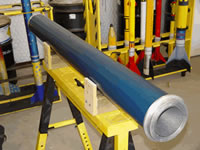 |
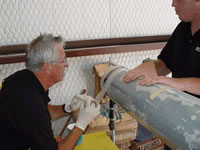 |
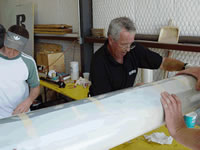 |
|
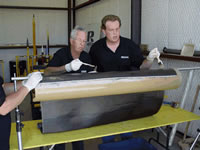 |
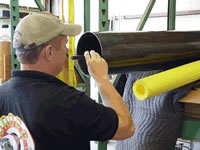 |
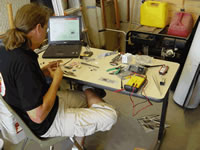 |
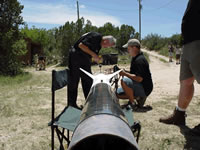 |
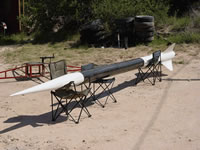 |
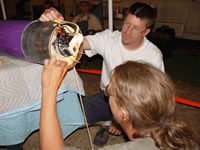 |
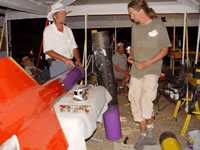 |
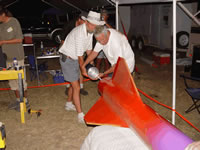 |
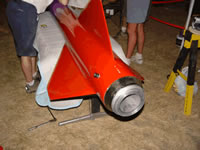 |
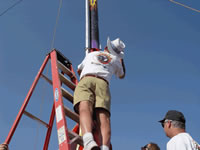 |
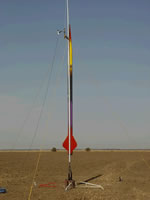 |
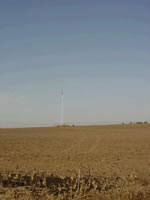 |